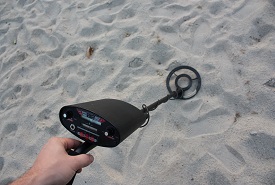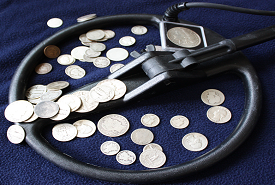National Geographic PRO Series Info & Details:
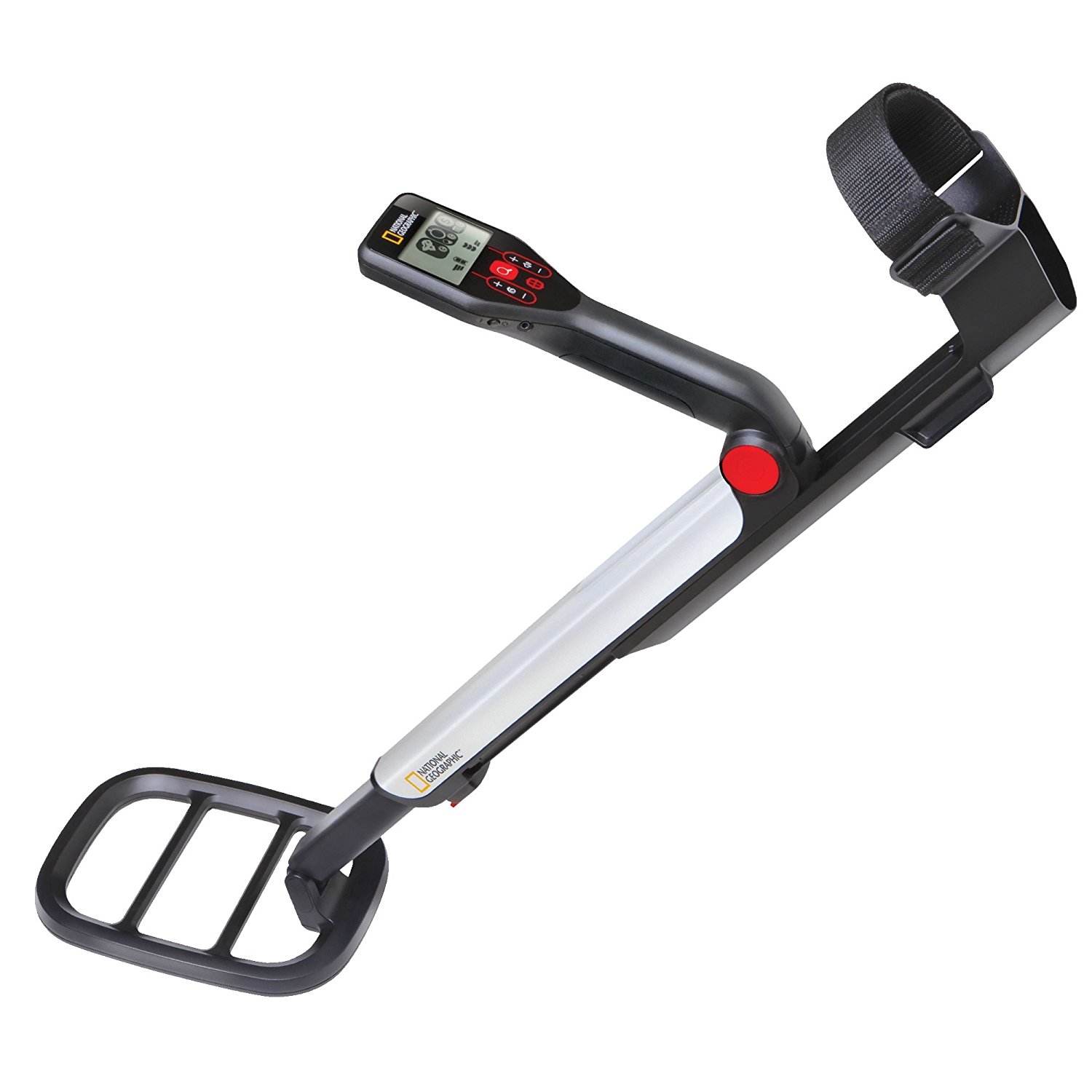
– Three detection modes
– Four sensitivity modes
– Compact design (folds down for storage)
– Adjustable from 22″ – 45″
– 10 inch waterproof coil
– Newest on the market metal detector
National Geographic PRO Series Review & Guide:
The National Geographic PRO Series Metal Detector was the first metal detector I purchased. It is popular because it is simple to use and very reasonably priced (around 100 bucks) which are important features of any beginner metal detector. If you are new to metal detecting it is important you have a metal detector that you simply turn on and start searching for treasure. The National Geographic PRO Series is that detector. You set the sensitivity & discrimination and off you go! This detector also makes a great backup when you decide to upgrade down the line. Mine stays in back of my Jeep for those unexpected detecting sessions. If I see a park I want to detect or a sidewalk tear-out, I have my National Geographic PRO Series right there ready to search for goodies! The National Geographic PRO Series has received great reviews from users, have a look at the 1,300+ Customer Reviews.
When I first started I set the detector to all metal (center position on the toggle switch) with the discrimination as low as possible (right dial turned all the way to the left) and the sensitivity to half way (left dial turned to the middle). The reason I did this was because I just wanted to see if the detector worked! Sure enough I was getting signals that only gave one tone and it was exciting knowing there was something in the ground.
As you get more familiar with the National Geographic PRO Series Metal Detector there are many opinions on the proper settings. My personal view is that you want the detector to help you find out what the target is through the tones but never discriminate targets from not being heard, with the exception of iron. Additionally, you want to keep the sensitivity as high as possible without falsing (detector signals a target but there is none).
If you are looking for a perfect guide book that lays out the basics of metal detecting have a look at this book. From detailing key terminology with regards to the metal detecting hobby and laying out what a typical metal detecting hunt consists of this book will provide you with a depth of great information for the beginner. If you are new to the hobby have a look at Metal Detecting for the Beginner.
Bounty Hunter TK4 Tracker IV Manual:
There is no better place to learn about a metal detector than from it’s own manufacturer. It provides details on the National Geographic PRO Series and gives some good basics on metal detecting. This is the manual from National Geographic’s website (PDF file). Click here to have a look at the National Geographic PRO Series Manual.
Recommended National Geographic PRO Settings:
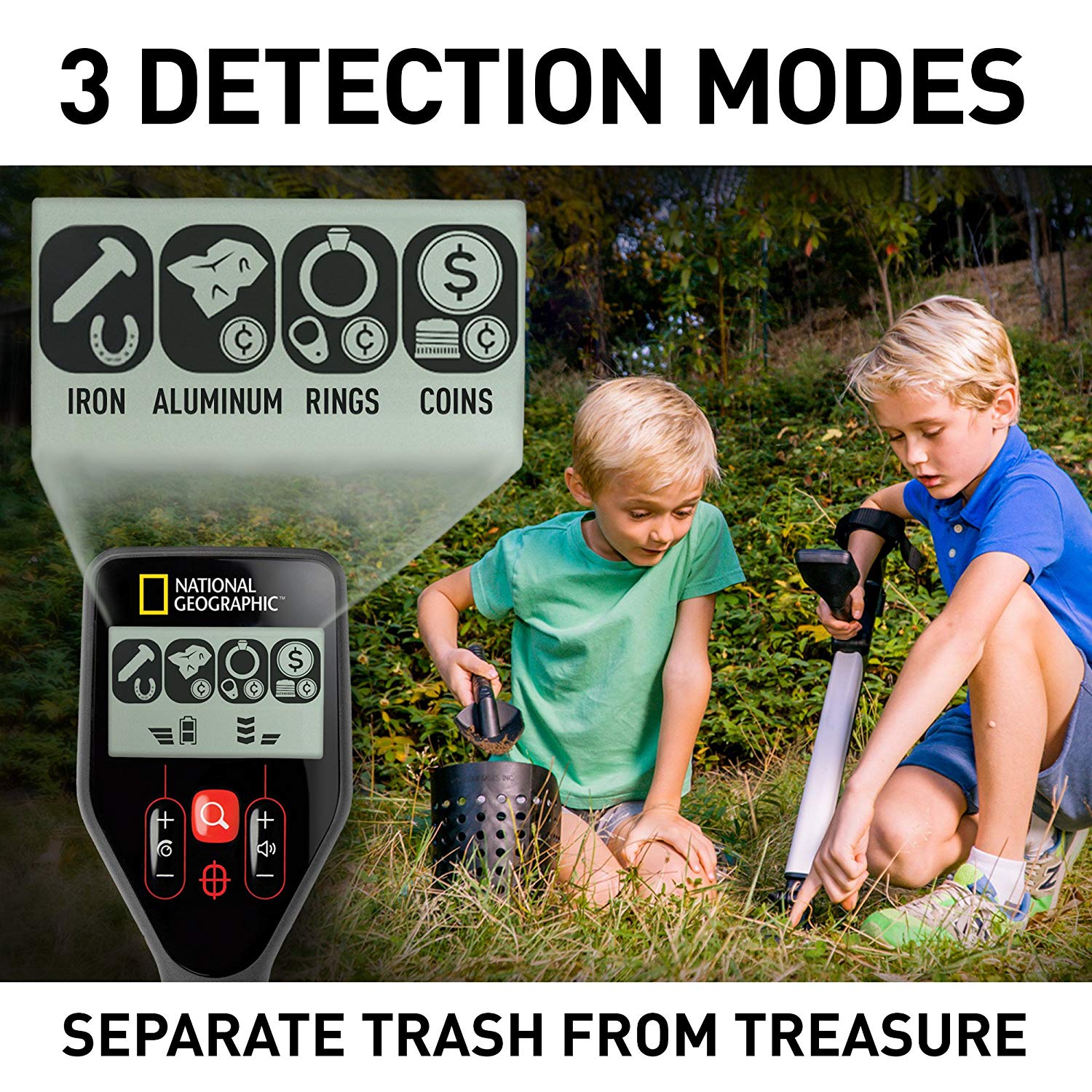
– Toggle switch in the right position (Tone discrimination)
– Right knob turned all the way to the left (No discrimination)
– Left knob turned between half way and three forths to the right (mid/high sensitivity)
– I recommend headphones (battery lasts longer)
As stated above the ideal setting is to keep the sensitivity as high as possible without falsing (the detector is making noises as if a target is present but there is nothing). That said, the best Bounty Hunter TK4 Tracker IV settings for the beach would be to have no discrimination and the sensitivity at max because in general the sand is very easy to dig and you don’t want to miss that gold ring! The best Bounty Hunter TK4 Tracker IV settings for the park or rural area would be turn up the discrimination to about the nine o’clock position, you never want to have that very high because it will knock out possible good targets.
Popular National Geographic PRO Series Accessories:
Below are some common National Geographic PRO Series accessories that will help with metal detecting. It is all about efficiency with these accessories. Pinpointers are great for finding targets quickly and rechargeable batteries keep you out in the wild metal detecting.
Pinpointer
Need a little help after finding potential treasure with the National Geographic PRO Series. If you are at the park or a relatives old property you don’t want to dig giant holes to dig up at that old silver quarter. The pin pointer lets you know if you are close to a target by beeping when you place it next to the metal object. Would you rather use a small handhold pinpointer to know if you have dug up the target or grab your detector everytime and scan a clump of dirt. Check here for the lowest price on Bounty Hunter Pinpointer. Additionally, if you want a water resistant and more rugid pin pointer check out the Garrett pro-pointer.
National Geographic PRO Series Rechargeable Batteries
Panasonic Eneloop AA Batteries are the gold standard for rechargeable batteries. They work well, are very reliable, and can be used for all your other electronics that require AA batteries.
Metal Detecting Digging Tools & Scoops
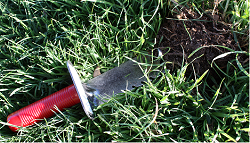 With all the targets you find with the National Geographic PRO Series you need a good quality digger. A metal detecting shovel needs to be well made for prying up dirt and cutting through grass and roots. Have a look at these metal detecting digging tools. All these shovels have great amazon reviews and are perfect for metal detecting.
With all the targets you find with the National Geographic PRO Series you need a good quality digger. A metal detecting shovel needs to be well made for prying up dirt and cutting through grass and roots. Have a look at these metal detecting digging tools. All these shovels have great amazon reviews and are perfect for metal detecting.
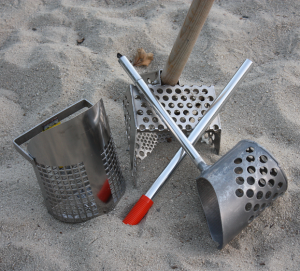 If you are close by any body of water you need to try metal detecting the dry beach sand. In order to dig up the targets in the most efficient way, you need to purchase a beach metal detecting sand scoop. These are designed to quickly sift through the sand so you can keep searching for the goodies. Also, for the sand locations of playgrounds using a handheld sand scoop is perfect as it makes digging up targets quick and easy. Have a look at my page dedicated to metal detecting sand scoops.
If you are close by any body of water you need to try metal detecting the dry beach sand. In order to dig up the targets in the most efficient way, you need to purchase a beach metal detecting sand scoop. These are designed to quickly sift through the sand so you can keep searching for the goodies. Also, for the sand locations of playgrounds using a handheld sand scoop is perfect as it makes digging up targets quick and easy. Have a look at my page dedicated to metal detecting sand scoops.
Where to Hunt with the National Geographic PRO Series?
Research is an important part of metal detecting. Take a look around the area where you live and determine what you are searching for. Is it old relics, coins, or newer drops like change or jewelry? Personally, I like to do both but because of the area I live in, I am primarily a beach hunter.
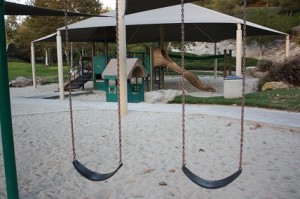 I like to start in the playground sand (swings/slides are a great spot) as it is easy to find targets and a great location to test the machine! As you advance into digging in the grass I recommend you research proper digging technique as it is a quick way to get unwanted attention as people quickly notice large holes and dead grass left behind. Look for heavy activity such as sports, picnic spots under trees, and where spectators like to sit and watch. You never know what you will find! Click here for more beginner metal detecting location ideas.
I like to start in the playground sand (swings/slides are a great spot) as it is easy to find targets and a great location to test the machine! As you advance into digging in the grass I recommend you research proper digging technique as it is a quick way to get unwanted attention as people quickly notice large holes and dead grass left behind. Look for heavy activity such as sports, picnic spots under trees, and where spectators like to sit and watch. You never know what you will find! Click here for more beginner metal detecting location ideas.
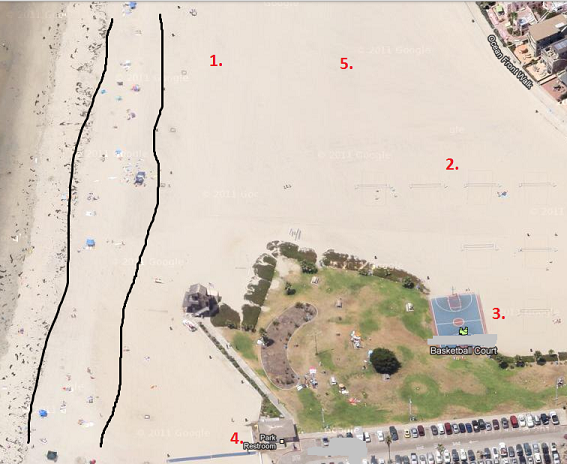 The beach is my favorite place to metal detect. Why is that? Because it is easy to dig and the beaches are constantly being replenished with fresh drops. During the summer you can go after work, in the morning, or ideally, on Sunday evening to catch all the weekend travellers to see what was left behind. During the winter, storms can move the sand around and you can find older coins and artifacts. The National Geographic PRO Series will work great on the dry sand of the beach. You may want to turn up the discrimination as the beach can be quite trashy. Be sure to check out my webpage detailing my Beach Metal Detecting Tips.
The beach is my favorite place to metal detect. Why is that? Because it is easy to dig and the beaches are constantly being replenished with fresh drops. During the summer you can go after work, in the morning, or ideally, on Sunday evening to catch all the weekend travellers to see what was left behind. During the winter, storms can move the sand around and you can find older coins and artifacts. The National Geographic PRO Series will work great on the dry sand of the beach. You may want to turn up the discrimination as the beach can be quite trashy. Be sure to check out my webpage detailing my Beach Metal Detecting Tips.
Interested in buying the National Geographic PRO Series?
The National Geographic PRO Series is new to the scene metal detector. Popularity is growing because its packed with new technology and has an easy to use screen display. If you are debating between the National Geographic PRO Series Metal Detector and the Bounty Hunter TK4 Tracker IV think about what would be easier to use? Knob or button functionality. If you want to pay the least amount and the use of knobs suits you, go with the Bounty Hunter TK4 Tracker IV. But, if you want new technology features, easy to break down design, and LED display go with the National Geographic PRO Series. When purchasing a metal detector you of course want the best price. So why not buy from the websites that have consistently low prices. To the right is the best price on Amazon if you are interested in buying the new. Below are current Ebay auctions that include both new and used metal detectors. If you found the information useful and choose to buy from either of these sites, good luck with your new hobby!


